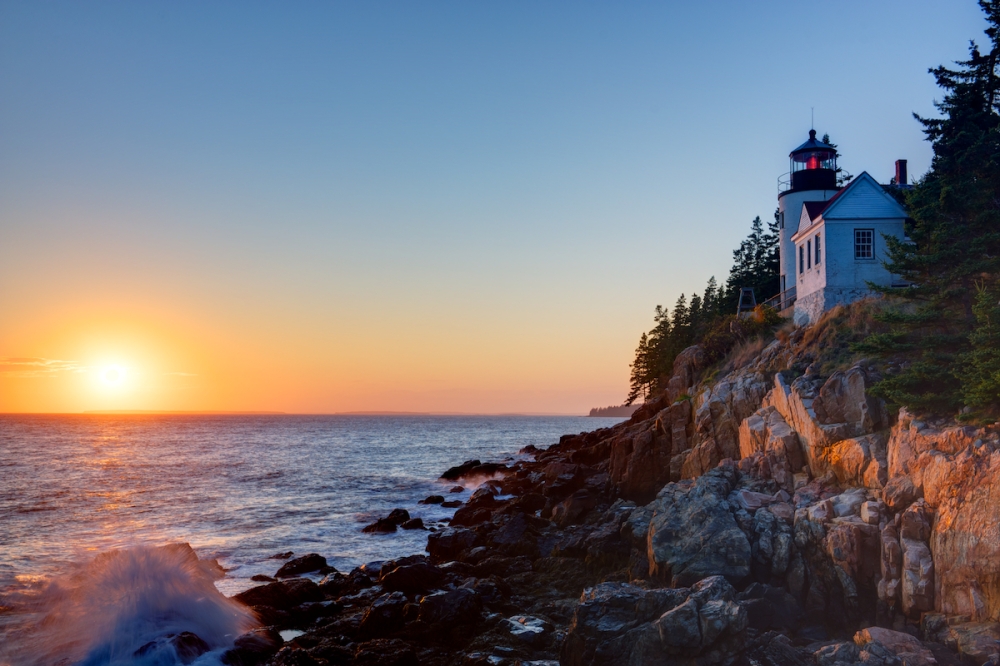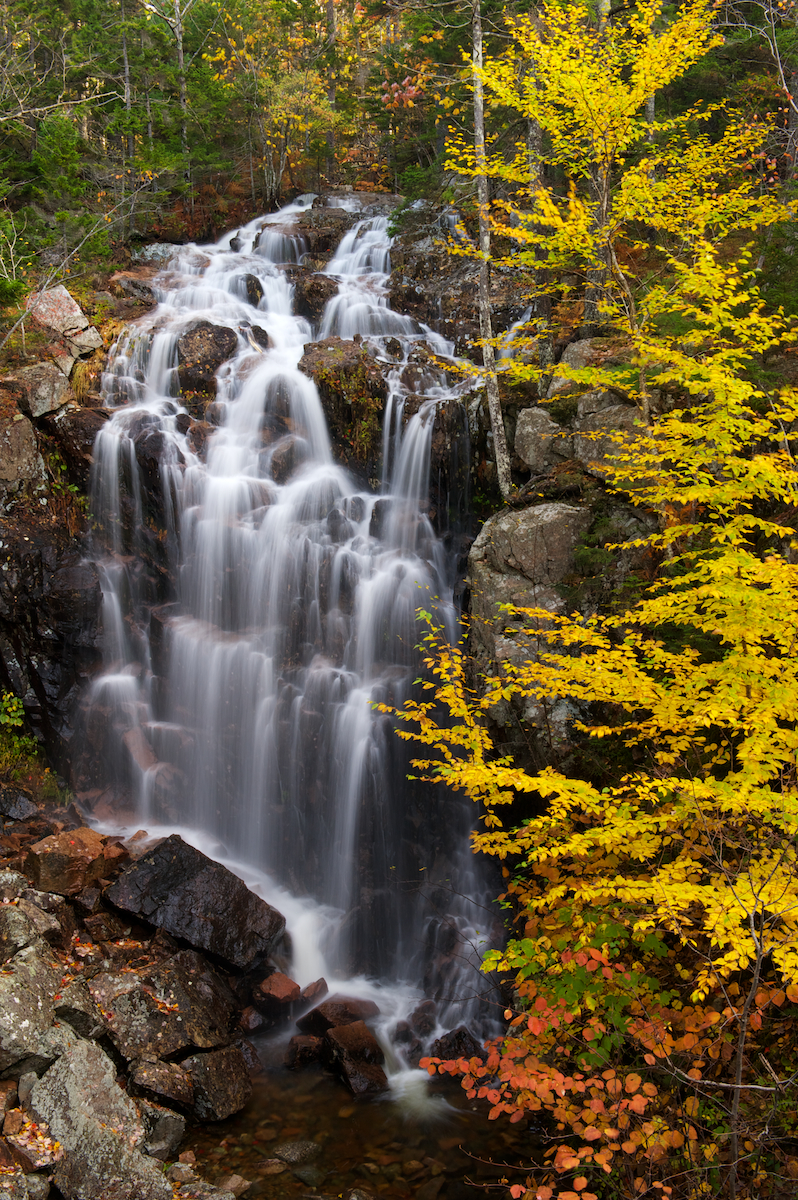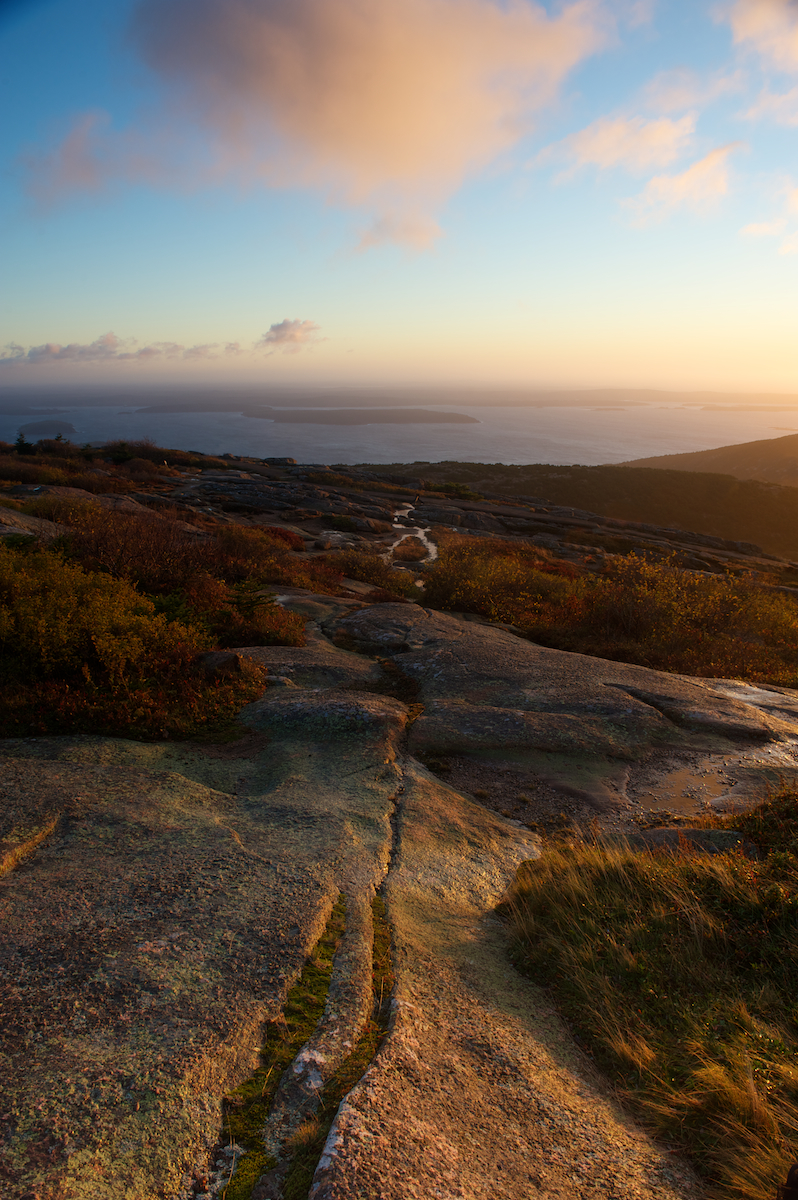One of the unique aspects of Maine is the variety and quantity of lighthouses that are found all along her coast. Although we saw plenty of lighthouses on the fall excursion to Maine, Bass Harbor Head Light is the most scenic lighthouse within the boundaries of Acadia National Park.
The problem with a pretty lighthouse is that just about everyone wants to look at it and take a picture of it. That problem was exacerbated by the fact that we were in the park during the peak fall color season and loads of other photographers wanted to take a shot of a lighthouse as well. We arrived about an hour and a half before sunset and there were already two dozen or so photographers present. To take this shot, you have to crawl out on the rocks near the surf line and find a decent spot to set up your tripod. In this case, that was difficult because the early arrivers (as if an hour and a half isn’t early enough!) had take the prime locations. I had to fiddle around quite a bit to shoot just over the heads of the other photographers and still end up with a foreground to my liking.
After getting set up, we basically stood our ground and waited for the light to get better. A few intrepid photographers tried to move to some unoccupied locations close to the water and ended up getting soaked by the rising tide and crashing waves. One stepped into a tide pool and soaked his trousers up to his thigh. A few people tried to tuck into spots that weren’t really big enough for another person and only ended up irritating those who had been there early. At one point someone counted over fifty of us clinging to the rocks like a pod of lobsters!
Finally, the sun moved close enough to the horizon to create some golden light. There weren’t nearly enough clouds in the sky so shooting into the sun created a huge latitude of exposures in the scene. I had to shoot seven images bracketed by one stop each in order to capture the highlights in the water and on the lighthouse along with the shadow detail in the rocks in the foreground. I blended the images together with Photomatix Pro’s Exposure Blending tool. I didn’t capture all the detail of the sun and the rocks are perilously close to being underexposed, but I like the image overall.
As luck would have it, we were a few miles away the next night, and a brilliant sunset ensued. I couldn’t help but wish that we had been at Bass Harbor Head Light on that afternoon. At least in my mind’s eye, I would have had an altogether different and better image to share. But, that didn’t happen. That is the kind of thought that keeps a photographer returning to the same scene over and over again.



